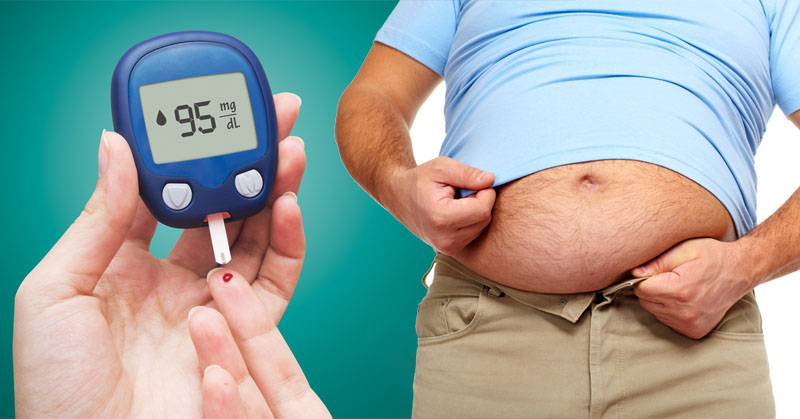Well, the news is out. According to a new report released by the CDC, more than 100 million Americans have diabetes or prediabetes. But this doesn’t need to be the case. In fact, if more people would learn the following diabetes symptoms, they will be on their way to understanding what’s going on. And able to do something about it.
You see, about one-third of people who have who have diabetes are actually undiagnosed and even unaware of their poor health. That’s approximately 8 million adults living with this condition and likely getting worse. Therefore, being able to recognize type 1 diabetes symptoms and type 2 diabetes symptoms is vital to catching the disease early on and forming a treatment plan.
Unfortunately, prediabetes symptoms often don’t manifest visibly, so many early symptoms of diabetes are largely unknown and go unnoticed.
Overall, diabetes is the body’s inability to use insulin to move glucose into the cells. The type of diabetes explains the underlying problem with this process.
Type 1 Diabetes
While the exact cause of type 1 diabetes is unknown, we do know it’s an autoimmune disease. And we know what is happening, even if we don’t know the autoimmune trigger: the body’s immune system destroys the insulin-producing cells in the pancreas by mistake.
Without insulin, the body cannot access the cells to put energy in. Glucose (sugar) builds up in the blood, yet the cells don’t have energy.
Risk factors, of course, are not a guarantee of developing type 1 diabetes. On the other hand, you may not have any of these risk factors but still develop this disease. Risk factors for type 1 diabetes include:
- Family history – Anyone with a parent or sibling with type 1 diabetes has a greater chance of developing the condition.
- Genetics – Certain genes in the body may indicate an increased risk of developing type 1 diabetes.
- Age – Type 1 diabetes is often called juvenile diabetes, because its onset generally occurs during developmental periods before adulthood.

Type 1 Diabetes Symptoms
Symptoms of diabetes in children or adults can appear at any age, but most commonly appears at two peaks. The first peak is between ages 4 and 7, and the other peak is between ages 10 and 14. Symptoms of type 1 diabetes in children include extreme fatigue, extreme thirst, constant urination, abdominal pain, nausea and vomiting, blurry vision, and wounds that do not heal.
Other symptoms include the following:
-
- Feeling thirsty frequently and having a dry mouth
- Changes in appetite, and even feeling hungry while eating
- Extreme Fatigue
- Blurred, worsening vision
- Slow healing of skin wounds, frequent infections
- Unexplained changes in weight
- Heavy breathing
- Loss of consciousness
- Nerve damage that causes tingling, pain and numbness in the limbs, hands and feet
Type 1 diabetes is a lifelong condition that must be managed. Unfortunately, since the triggers of this autoimmune condition aren’t clearly known, it is important to watch for the signs and see your healthcare provider.
Type 2 Diabetes
Type 2 diabetes develops when they body becomes insulin-resistant, or when the pancreas stops producing an adequate amount of insulin. Now, the energy can’t get into the cells because too much is already in there. It’s as though the cells have locked the door on insulin. As a result, blood sugar levels increase and lead to type 2 diabetes.
Symptoms of diabetes type 2 in adults may stem from genetics or environmental factors. Risk factors include:
- Weight – Being overweight is a primary risk factor for type 2 diabetes.
- Fat distribution – A body that stores fat primarily in the abdomen has a greater risk of developing type 2 diabetes.
- Inactivity – The less active you are, the greater your risk is of developing the condition.
- Family history – If a parent of sibling has type 2 diabetes, your risk may increase.
- Age – Originally called adult-onset diabetes, this type of diabetes is now showing up in higher numbers in younger people. Since type 2 diabetes is a metabolic disorder, this condition manifests when the body losses metabolic flexibility.

Type 2 Diabetes Symptoms
While the risk of type 2 diabetes increases as you age, type 2 diabetes is also increasing in children, adolescents and younger adults. Symptoms of type 2 diabetes in children include unexplained weight loss, dry mouth, fatigue, constant urination, blurred vision, heavy breathing, and itchy skin.
Since diabetes is the body’s inability to move glucose into the cells, the symptoms between the two types are similar. The type determines the underlying reason. So symptoms of type 2 diabetes are extensions of the breakdown of the body’s ability to use insulin and sequester blood sugar.
Additional symptoms you may see include the following:
-
- Chronically dry and itchy skin
- Patches of dark, velvety skin in the folds and creases of the body
- Frequent infections
- Unexplained weight gain
- Pain, swelling, numbness or tingling in the hands and feet
- Loss of libido, reproductive problems and sexual dysfunction
If you notice even a few of these symptoms, you may want to see your healthcare provider for a visit, just to make sure you don’t have diabetes brewing.
Watch the video below to learn about superfoods that can help you prevent and manage diabetes:
Sources:
Diabetes Research
CDC
Mayo Clinic
Mayo Clinic
Web MD
Endocrine Web


